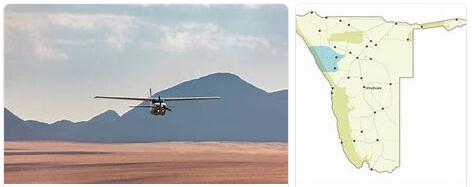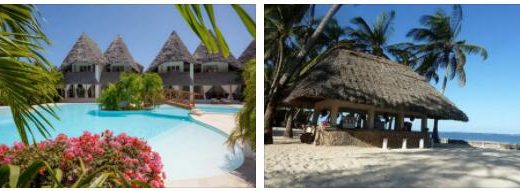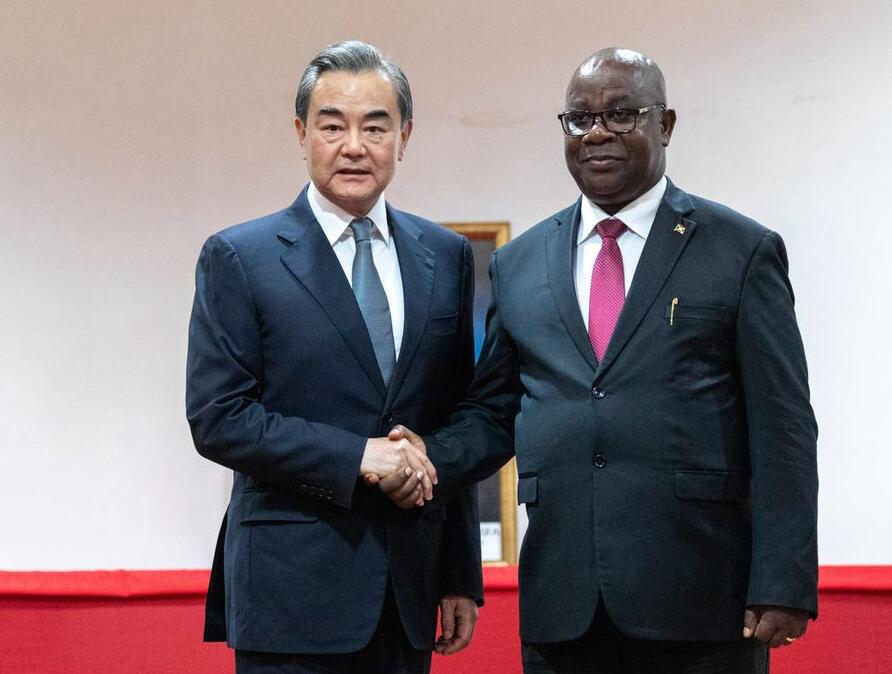Namibia General Information
Geographical position
Namibia is located in the tropical latitudes of southwestern Africa, on the coast of the Atlantic Ocean. It borders on Angola, Zambia, Botswana and South Africa. From the west, the country is washed by the Atlantic Ocean, in the south it is bounded by the Orange River, in the north by the lower reaches of the Kunene River.. Its territory, which has a wedge-shaped shape facing the tapering shape to the south, is crossed by the Southern Tropic (Tropic of Capricorn), the length from north to south is more than 1400 km, from west to east – about 1 thousand km. Territory area – 824,268 sq. km.
The country takes its name from the name of the desert. The Namib Desert is a unique geological formation that impresses with its pristine nature and unforgettable landscapes. It is the landscape and scenery that is the most striking characteristic of the country, and this is most evident in such tourist attractions as Sussusvlei, Sandwich Harbor and Skeleton Coast Park.
Capital: Windhoek.
Climate
Tropical, very dry, influenced by the cold Benguela Current of the Atlantic Ocean. In the northeast of the country it is subtropical, with strong continental features. The average temperature in summer (December-April) is +28-32 C (up to +38 C in the north), +15-20 C at night (in desert areas the temperature can drop sharply to 0 C at night). In winter, respectively, +15-20 C and around 0 C at night. The “rainy season” lasts from November to March-April. The amount of precipitation ranges from 10-50 mm. per year on the coast (often they fall here only in the form of fogs) up to 400-600 mm. in the extreme northeast. Cold winds constantly blow on the coast.
State structure, political parties
Full name – Republic of Namibia. The state system is a republic. The country is divided into 13 regions. The capital is Windhoek. Namibia gained independence on March 21, 1990 (previously the country was under the control of the Republic of South Africa). This date became a national holiday – Independence Day (1990). Executive power belongs to the Head of State and the government headed by the Prime Minister. Legislative power is exercised by a bicameral parliament, which consists of the National Assembly and the National Assembly. The largest political parties are: South West Africa People’s Organization (SWAPO), Turnhalle Democratic Alliance (DAT).
The population of Namibia, according to estimates at the beginning of the 90s, is about 1.4 million people. After the country gained independence, the influx of emigrants increased sharply, as a result of which the population increased significantly (the figure is called 1.8 million people). The average population density in Namibia is 1.9-2 people per 1 sq. km, but it varies greatly from area to district: in central Ovamboland, for example, 5-8 people per 1 sq. km. Linguistically, the population is divided into three groups: the Bantu peoples, about 65%, the peoples of the Khoisan language family, about 16%, and the Europeans, about 16%.
Religion
Christianity prevails in Namibia (approx. 90% of the population), including 51% – Lutherans, 19% – Catholics. Main congregations: German Evangelical Lutheran Church in Namibia, Rhine Church in Namibia, Evangelical Lutheran Church in the Republic of Namibia, Roman Catholic Church, Anglican Church, African Methodist Episcopal Church, Methodist Church of South Africa, Dutch Reformed Mission Church, Evangelical Reformed Church in Africa, Dutch Reformed Church.
Story
The territory of modern Namibia was colonized by Germany in 1883-1884. and was declared a German protectorate called German South West Africa. The country was occupied by the Republic of South Africa in 1915, and in 1920 South Africa received a mandate from the League of Nations to govern South West Africa. In 1949, South Africa included South West Africa in its territory without the permission of the UN, which deprived South Africa of the mandate to govern the country. In 1968, by decision of the UN, the country was renamed Namibia. Established in 1966, the armed organization SWAPO waged a liberation struggle that ended with the declaration of independence of Namibia in 1990.
Economy
Namibia’s economy is based on mining, fishing, tourism and agriculture. Of these, tourism is becoming the fastest growing industry. The largest contributor to Namibia’s gross national product is the government. Agriculture creates the most jobs.
Fishing
Namibia is one of the world’s leading fisheries. An effective policy for the protection and management of fish resources ensures the restoration of the country’s seriously reduced fish stock. The main commercial fish species are hake, monkfish, sardines, anchovy and Cape horse mackerel. Other commercially valuable species are lobster, orange rafi, alfonsino, kingklip, tuna, halibut crabs and snook. Oysters and shellfish are grown on farms in Swakopmund and Lüderitz.
Tourism
Namibia has 26 parks and reserves, the total area of which is 15% of the entire country. In addition to the 12 public holiday camps operated by the Namibia Resort Council (NWR), the tourism infrastructure is well developed throughout the country. Hotels, boarding houses, guest farms and campsites have a high level of service that is not inferior to the European one. The Namibian Tourism Board (NTB) was established in 2001 to oversee and provide a high level of tourism services.



